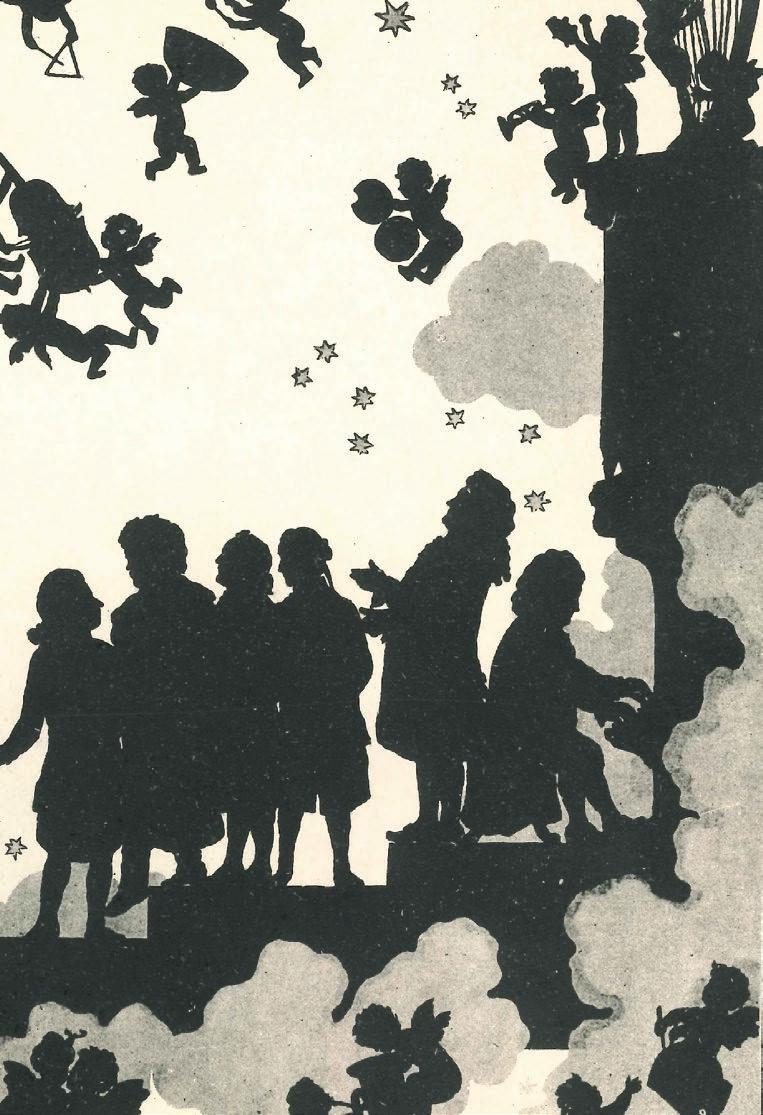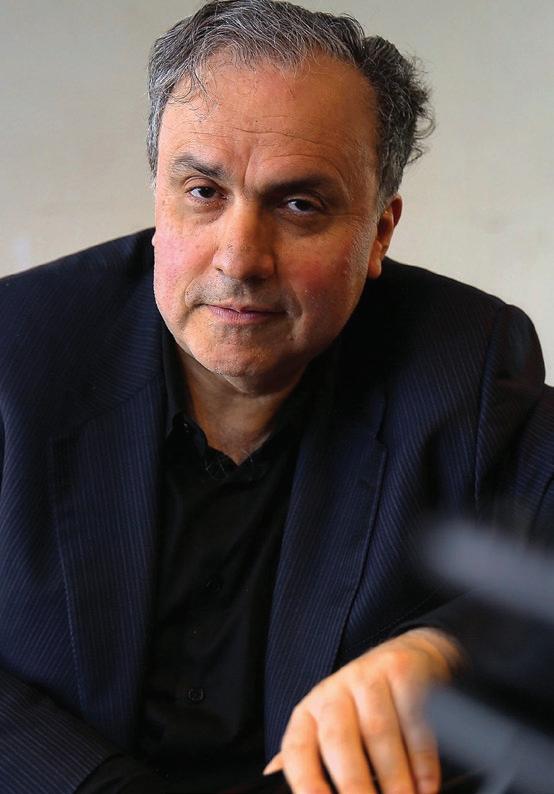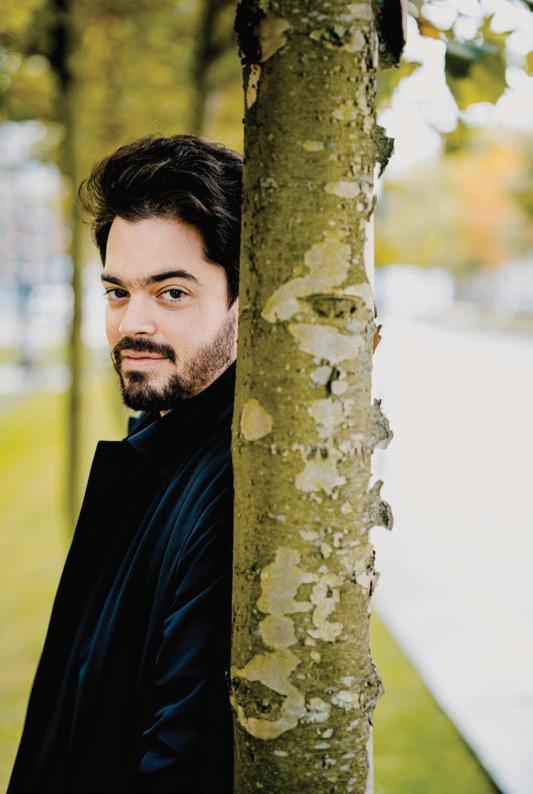
Bruckner 9 with Lahav Shani Thu 24 November 2022 • 20.15 Fri 25 November 2022 • 20.15
Programme Notes
PROGRAMME
conductor Lahav Shani piano Yefim Bronfman
Ludwig van Beethoven 1770-1827 Piano Concerto no. 3 in C minor, Op. 37 (1797/1808)
• Allegro con brio
• Largo
• Rondo: Allegro intermission
Anton Bruckner 1824-1896 Symphony no. 9 in D minor (1887-1896)

• Feierlich, misterioso
• Scherzo: Bewegt, lebhaft - Trio: Schnell, Scherzo da capo
• Adagio: Langsam; feierlich
Concert ends at around 22.25
Most recent performances by our orchestra: Beethoven Piano Concerto no. 3: Sep 2018, piano Daniel Barenboim, conductor Lahav Shani Bruckner Symphony no. 9: Mar 2017, conductor Valery Gergiev
One hour before the start of the concert, Emanuel Overbeeke will give an introduction (in Dutch) to the programme, admission €5. Tickets are available at the hall, payment by debit card. The introduction is free for Vrienden.
A long time coming
Seven years elapsed from the time that Beethoven first began sketching his Third Piano Concerto to the date the piece was premièred – and even then, the composer had not yet fully committed the solo part to paper. Bruckner too worked for seven years on his Ninth Symphony. But in contrast to Beethoven he would not manage to complete that work.
Bruckner’s arrival in heaven. Silhouette by Otto Böhler, around 1900.
Cover: Photo Niko Cingaryuk
Turbulent piano concerto
At the end of 1802, Ludwig van Beethoven enthusiastically revealed to his friends that he was taking his music down a new path. This heralded the heroic middle period of his music, the prime example being the Third Symphony, ‘Eroica’. The Third Piano Concerto also belongs to that ‘new path’: it is more of a symphony with piano. It begins with an extensive orchestral introduction lasting some 110 bars, without a single note on
the piano. At that time, this was both daring and unprecedented. The composition of the concerto was spread over a long period. The first sketches were made in 1796. At the première in 1803 Beethoven played most of the work from memory; he had not yet written out the entire piano part. It would take him another year to get round to that. And the virtuoso cadenzas would have to wait to 1809, around 14 years after the initial sketches.
The day of the première, 5 April 1803, was a hectic one. Beethoven’s pupil Ferdinand Ries recalled later that Beethoven summoned him at five in the morning. He found the composer in bed, buried under a mound of paper and still feverishly writing down some of the parts for that evening’s concert. As well as the Third Piano Concerto, the programme included the oratorio Christus am Ölberge, the First and Second Symphonies and some other pieces that were ultimately removed from the overloaded programme. The rehearsals began at eight in the morning in the presence of Prince Lichnowsky. As noon approached, things were going really badly. The musicians were exhausted, so the Prince ordered in large hampers of food to boost morale. And it worked. The rehearsals continued throughout the afternoon and the concert began at six. Beethoven asked his pupil Ignaz Seyfried to turn the pages during the piano concerto. ‘But heaven help me!’ Seyfried later observed, ‘That was easier said than done. I saw almost nothing but empty pages; at the most, on one page or another, he had scribbled down a few Egyptian hieroglyphswholly unintelligible to me - that only he could decipher. In fact, he played nearly all of the solo part from memory, since he had not had time to set it all down to paper. He gave me a secret glance whenever he was at the end of one of the invisible passages, and my scarcely conceivable anxiety not to miss the decisive moment amused him greatly.’
The concerto begins in typical Beethoven fashion, with a simple theme of four bars full of foreboding. But what Beethoven does with this theme is extraordinary. The first movement is packed with drama, yet introspective. And

the piano, after those 110 bars of silence, pounces in revenge. After the impressive cadenza the piano is ever-present until the final bar of the coda. A melodious Largo then follows, with fabulous arabesques on the piano that provide a sort of rustling accompaniment to long suspenseful orchestral passages. Despite its C minor key signature, the Rondo is exceptionally lively and spiky, full of sudden twists and turns and unexpected accents. The concerto ends with a greater sense of drama and drive, in the manner of Mozart’s Piano Concerto in C minor, K. 491, Beethoven’s favourite concerto.
Bruckner’s farewell to the world
Whilst Anton Bruckner was working on his Ninth Symphony, he begged God every day for the strength to complete it. We know that from the memoirs of Richard Heller, the doctor who treated Bruckner until his death. The composer worked stubbornly for seven years, from 1889 to 1896, on his Ninth, with an attitude of ‘If He takes the pen from my hand, let it be His responsibility’. Until that fateful day on 11 October 1896, when returning from his morning walk, Bruckner passed away peacefully, leaving behind the greatest unfinished symphony since that of Franz Schubert.
Bruckner’s Ninth Symphony is often referred to as one of the most important links between 19th and 20th century music, because it took the revolutionary innovations of Wagner’s Tristan und Isolde to even greater heights. The pounding rhythms of the Scherzo seem to anticipate Stravinsky and Bartók, while the large leaps and piercing dissonances point towards the Second Viennese School of
Arnold Schönberg, Alban Berg and Anton Webern.
In the hectic last two years of his life Bruckner tried to finish the Finale of his Ninth Symphony, but God summoned him first. So, in common with many unfinished works, the Ninth has taken on a life of its own and several
instruments). The movement ends with an expansive open fifth (a chord that spans five tones) in the manner of Mozart’s Requiem.
The Scherzo has macabre overtones thanks to the unsettling pizzicato on the first violins and cellos. Mysterious chords float over a
attempts have been made to complete it. From the sketches of the Finale that remain it can be seen that Bruckner’s musical spirit was still wide awake and full of imagination, in spite of his failing health. In his mind, the immense fourth movement would have surpassed even that of the Eight in magnitude, with a fugue and quotations from his Te Deum. All the same, there is something satisfying and comforting about ending with the Adagio.
Angst and the awareness of death pervade the three finished movements. As in Mozart’s unfinished Requiem, the first movement is dominated by a dark D minor. After a soft D in the strings and woodwind, the horns herald impending doom. There are cries of desperation in remote keys and restless modulations in the strings and oboes. The intensity increases in bold harmonies and the orchestra reaches the main theme in a loud unison (all the instruments playing the same note). This is followed by new theme complexes, relieved regularly by the earlier desperate outcry and mysterious pizzicato (notes plucked on stringed
41-bar sustained bass tone in C sharp. A mighty stamping in the orchestra and misplaced cheerfulness in the oboe follow, but ‘the joke’ ends with a rictus grin in D minor. The Trio begins with fairy music in the style of Mendelssohn. But the devilish Scherzo comes racing along behind it.
The Adagio is Bruckner’s heartrending farewell to this world and to life, beginning with anguished intervals of the minor ninth (a chord that spans nine tones). Mysterious harmonies are played by the Wagnerian tubas, including a melody that seems to hark back to Wagner’s Parsifal. But the genuine quotations are from Bruckner himself, from the Miserere in his Mass in D, and later, after a desperate dissonant climax, from the Adagio of the Eighth Symphony and the first theme from the Seventh. Then, finally, peace is restored at the end of this turbulent farewell.
Clemens Romijn
He found the composer in bed, buried under a mound of paper and still feverishly writing down some of the parts for that evening’s concert.
Lahav Shani - chief conductor
Born: Tel Aviv, Israel
Current position: chief conductor Rotterdam Philharmonic Orchestra; music director Israel Philharmonic Orchestra
Before: principal guest conductor Vienna Symphony Orchestra from 2017 to 2020 Education: piano at the Buchmann-Mehta School of Music Tel Aviv; conducting and piano at the Academy of Music Hanns Eisler Berlin; mentor: Daniel Barenboim
Breakthrough: 2013, after winning the Gustav Mahler International Conducting Competition in Bamberg
Subsequently: Staatskapelle Berlin, Berlin State Opera, Vienna Philharmonic Orchestra, Bavarian Radio Symphony Orchestra, Staatskapelle Dresden, Zurich Tonhalle Orchestra, Berlin Radio Symphony Orchestra, Philharmonia Orchestra, Philadelphia Orchestra, Pittsburgh Symphony Orchestra, Seoul Philharmonic Orchestra, Royal Concertgebouw Orchestra Debut Rotterdam Philharmonic: 2016
Yefim Bronfman - piano
Born: Tashkent, Uzbekistan Education: Rubin Academy, Tel Aviv with Arie Vardi, Juilliard School, New York with Rudolf Firkušný, Curtis Institute of Music, Philadelphia with Leon Fleisher, Marlboro School of Music with Rudolf Serkin


Awards: Avery Fisher Prize 1991, Grammy Award 1997, Jean Gimbel Lane Prize 2010, honorary doctorate Manhattan School of Music 2015
Breakthrough: 1975: debut with the Montreal Symphony Orchestra under Zubin Mehta
Subsequently: solo-appearances with all major international orchestras with conductors such as Daniel Barenboim, Herbert Blomstedt, Riccardo Chailly, Riccardo Muti, Yannick Nézet-Séguin, Sir Simon Rattle and EsaPekka Salonen; chamber music with Martha Argerich, Anne-Sophie Mutter, Isaac Stern, Pinchas Zukerman and many others Debut Rotterdam Philharmonic: 1984
Photo: James Estrin
Photo: Olivia da Costa
Musicians
Fri 9 December 2022 • 20.15
Sun 11 December 2022 • 14.15 conductor Jukka-Pekka Saraste clarinet Christoffer Sundqvist Wennäkoski Flounce Nielsen Clarinet Concerto Shostakovich Symphony no. 8
Fri 16 December 2022 • 20.15
Sun 18 December 2022 • 14.15 conductor Jan Willem de Vriend soprano Lucy Crowe tenor Mauro Peter baritone Christopher Purves choir Laurens Symfonisch Haydn Die Schöpfung
Thu 22 December 2022 • 20.15
Fri 23 December 2022 • 20.15 conductor Yannick Nézet-Séguin choir Nationaal Kinderkoor Tchaikovsky The Nutcracker
Sun 8 January 2023 • 10.30
Music for Breakfast No. 2 with Ron Tijhuis (Cor Anglais), Carla Schrijner (Cello), and colleagues from the orchestra Chamber Music by M. Haydn, Broemel, Françaix and Vaughan Williams
Thu 12 January 2023 • 20.15
Fri 13 January 2023 • 20.15
Sun 15 January 2023 • 14.15 conductor Lahav Shani piano Daniil Trifonov Beethoven Piano Concerto no. 1 Strauss Ein Heldenleben
Sun 12 February 2023 • 10.30
Music for Breakfast No. 3 with Charlotte Sprenkels (Harp), Veronika Lénártová (Viola), and colleagues from the orchestra Chamber Music by Mozart, Takemitsu, Ibert and Debussy
Chief Conductor
Lahav Shani
Honorary Conductor Yannick Nézet-Séguin
Principal Assistent Conductor Bertie Baigent
First Violin Igor Gruppman, leader Marieke Blankestijn, leader
Quirine Scheffers Hed Yaron Meyerson Saskia Otto Arno Bons Mireille van der Wart Cor van der Linden Rachel Browne Maria Dingjan Marie-José Schrijner Noëmi Bodden Petra Visser Sophia Torrenga Hadewijch Hofland Annerien Stuker Alexandra van Beveren Koen Stapert
Second Violin Charlotte Potgieter Cecilia Ziano Frank de Groot Laurens van Vliet Tomoko Hara Elina Staphorsius Jun Yi Dou Bob Bruyn Letizia Sciarone Eefje Habraken Maija Reinikainen Wim Ruitenbeek Babette van den Berg Melanie Broers
Viola Anne Huser
Roman Spitzer Galahad Samson Kerstin Bonk Lex Prummel
Janine Baller Francis Saunders Veronika Lénártová Rosalinde Kluck León van den Berg Olfje van der Klein Cello Emanuele Silvestri Joanna Pachucka Daniel Petrovitsch Mario Rio Gé van Leeuwen Eelco Beinema Carla Schrijner Pepijn Meeuws Yi-Ting Fang
Double Bass Matthew Midgley Ying Lai Green Jonathan Focquaert Robert Franenberg Harke Wiersma Arjen Leendertz Ricardo Neto
Flute Juliette Hurel Joséphine Olech Désirée Woudenberg
Flute/Piccolo Beatriz Da Baião
Oboe Remco de Vries Karel Schoofs Anja van der Maten
Oboe/Cor Anglais Ron Tijhuis
Clarinet
Julien Hervé Bruno Bonansea
Clarinet/ Bass Clarinet Romke-Jan Wijmenga Bassoon Pieter Nuytten Lola Descours Marianne Prommel
Bassoon/ Contrabassoon Hans Wisse Horn David Fernández Alonso
Wendy Leliveld Richard Speetjens Laurens Otto Pierre Buizer
Trumpet Alex Elia Simon Wierenga Jos Verspagen
Trombone Pierre Volders Alexander Verbeek Remko de Jager Bass Trombone Rommert Groenhof Tuba Hendrik-Jan Renes Timpani/ Percussion Danny van de Wal Ronald Ent Martijn Boom Adriaan Feyaerts Harp Charlotte Sprenkels
Agenda





